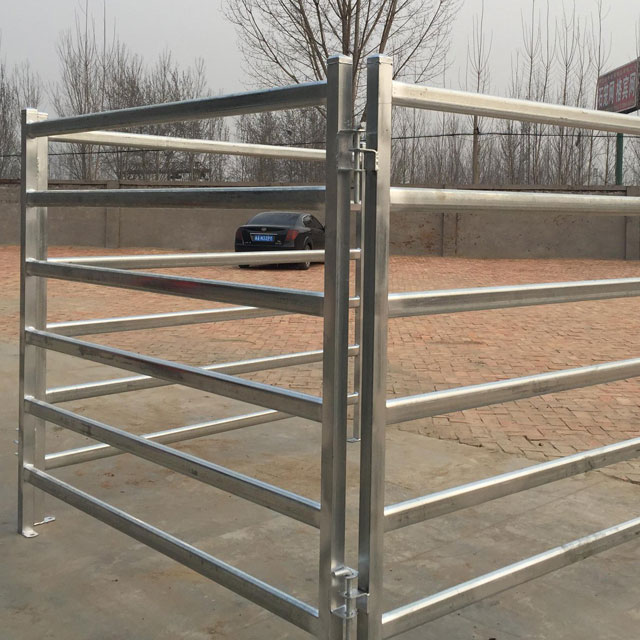Cattle Panel Fencing: The Ultimate DIY Solution for Garden and Livestock
Are you looking for a versatile, durable, and cost-effective fencing solution for your garden or livestock? Look no further than cattle panel fencing! This innovative approach to fencing has gained popularity among homesteaders, gardeners, and small-scale farmers for its flexibility and ease of installation. In this comprehensive guide, we’ll explore everything you need to know about cattle panel fencing, from its benefits to step-by-step installation instructions. Whether you’re a seasoned DIY enthusiast or a beginner, this article will equip you with the knowledge to create functional and attractive fencing for your property.
Why Cattle Panel Fencing is Worth Your Attention
Cattle panel fencing offers a unique combination of strength, versatility, and affordability that makes it an attractive option for many property owners. Unlike traditional fencing methods, cattle panels can be easily shaped and adapted to various uses, from garden trellises to livestock enclosures. This article will help you understand the potential of cattle panel fencing and guide you through the process of implementing this solution on your property.
What Are Cattle Panels and How Are They Used?
Cattle panels, also known as livestock panels or utility panels, are rigid, galvanized wire panels typically used for containing livestock. However, their sturdy construction and versatility have made them popular for various applications beyond animal enclosures. Let’s explore the characteristics and uses of cattle panels:
- Construction: Cattle panels are made of heavy-gauge welded wire, usually galvanized for rust resistance. The typical dimensions are 16 feet long and 50-52 inches tall, with a grid pattern of 4-inch by 4-inch or 6-inch by 6-inch squares.
- Versatility: These panels can be used for fencing, trellises, garden structures, temporary pens, and more. Their rigid nature allows them to stand upright with minimal support.
- Durability: The galvanized wire construction makes cattle panels highly resistant to weather and wear, often lasting for many years with proper care.
- Cost-effectiveness: Compared to many other fencing options, cattle panels offer an affordable solution without sacrificing quality or longevity.
How Do Cattle Panels Compare to Traditional Fencing Options?
When considering fencing options, it’s essential to compare cattle panels to other common choices:
- Wood fencing: While aesthetically pleasing, wood fences require more maintenance and are susceptible to rot and insect damage. Cattle panels offer greater durability and lower long-term costs.
- Chain-link fencing: Chain-link is affordable but lacks the versatility and aesthetic appeal of cattle panels. Cattle panels can be more easily shaped and adapted to various uses.
- Vinyl fencing: Vinyl is low-maintenance but can be expensive and less sturdy than cattle panels. Cattle panels provide a more cost-effective solution with greater strength.
- Welded wire fencing: While similar in construction, cattle panels are more rigid and can stand without as much support, making them easier to install and more versatile.
What Are the Benefits of Using Cattle Panels for Fencing?
Cattle panel fencing offers numerous advantages for both residential and agricultural applications:
- Easy installation: The rigid nature of cattle panels makes them simple to set up, often requiring fewer posts than traditional fencing.
- Versatility: These panels can be easily bent, cut, or shaped to create various structures, from garden arches to animal enclosures.
- Durability: Galvanized wire construction ensures long-lasting performance, even in harsh weather conditions.
- Cost-effective: Cattle panels provide an affordable fencing solution without compromising on quality or longevity.
- Visibility: The open design allows for clear sightlines, which can be beneficial for monitoring livestock or maintaining an open feel in garden spaces.
- Adaptability: Panels can be easily moved or reconfigured as needs change, making them ideal for temporary or evolving projects.
How to Install Cattle Panel Fencing: A Step-by-Step Guide
Installing cattle panel fencing is a straightforward process that can be accomplished with basic tools and some DIY know-how. Here’s a step-by-step guide to help you get started:
- Plan your layout: Measure the area you want to fence and determine the number of panels and t-posts needed.
- Gather materials: You’ll need cattle panels, t-posts, t-post driver, wire cutters, gloves, and optionally, zip ties or wire for securing panels.
- Mark post locations: Place a t-post every 8 feet along your fence line.
- Drive t-posts: Use a t-post driver to securely install each post about 1-2 feet into the ground.
- Attach panels: Lean the cattle panels against the t-posts and secure them using wire or zip ties. Overlap panels slightly for a continuous fence line.
- Trim if necessary: Use wire cutters to trim panels to fit your specific needs or to create gates.
- Reinforce corners: For added stability, consider using wood posts at corners and gates.
[For a more detailed guide on installing cattle panel fencing, check out our comprehensive article on paneles galvanizados para ganado.]
What Are Some Creative Uses for Cattle Panels in the Garden?
Cattle panels aren’t just for containing livestock; they have numerous applications in the garden:
- Trellises: Create sturdy supports for climbing plants like cucumbers, tomatoes, and pole beans.
- Arches: Bend panels to form beautiful garden arches for vines or flowering plants.
- Raised bed supports: Use panels as sides for raised garden beds or to create vertical growing spaces.
- Pea fences: Install panels vertically to support pea plants and make harvesting easier.
- Compost bin: Form a circular enclosure with a panel to create a simple compost bin.
- Garden room dividers: Use panels to section off different areas of your garden or create privacy screens.
How to Maintain and Care for Cattle Panel Fencing
To ensure the longevity of your cattle panel fencing, follow these maintenance tips:
- Regular inspections: Check for any damage, loose connections, or signs of rust.
- Clean as needed: Remove debris and vegetation that may accumulate on the panels.
- Tighten connections: Periodically check and tighten any wire or zip ties used to secure panels.
- Address rust promptly: If you notice any rust, clean the affected area and apply a rust-inhibiting paint.
- Reposition if necessary: Adjust panels that may have shifted due to soil movement or animal pressure.
What Are Some Common Challenges with Cattle Panel Fencing and How to Overcome Them?
While cattle panel fencing is generally straightforward to install and maintain, there are some challenges you may encounter:
- Uneven terrain: Use shorter t-posts or trim panels to accommodate slopes and hills.
- High-pressure areas: Reinforce sections where animals may push against the fence by adding extra t-posts or using wooden posts.
- Gates: Create custom gates using cattle panels and hinges, or purchase pre-made gates designed for panel fencing.
- Aesthetics: If the industrial look of cattle panels doesn’t suit your style, consider planting vines or attaching decorative elements to soften the appearance.
- Small animal containment: For smaller livestock or pets, consider adding additional wire mesh with smaller openings to the lower portion of the fence.
How Does Cattle Panel Fencing Compare in Cost to Other Fencing Options?
When considering fencing options, cost is often a significant factor. Here’s how cattle panel fencing compares to other common fencing types:
- Initial cost: Cattle panels are generally less expensive than wood, vinyl, or chain-link fencing materials.
- Installation cost: DIY installation of cattle panels is relatively simple, potentially saving on labor costs compared to more complex fencing systems.
- Maintenance cost: The durability of cattle panels means lower long-term maintenance costs compared to wood or other materials that may require regular painting or repairs.
- Longevity: The galvanized construction of cattle panels ensures a long lifespan, providing excellent value for the initial investment.
[For more information on cost-effective fencing solutions, visit our page on puertas de paneles para ganado.]
What Are Some Tips for Designing an Attractive Cattle Panel Fence?
While cattle panels are primarily functional, there are ways to enhance their aesthetic appeal:
- Incorporate plants: Train climbing plants like roses or clematis to grow on the panels, creating a living fence.
- Mix materials: Combine cattle panels with wood posts or decorative metal elements for a more refined look.
- Paint or powder coat: Consider painting or powder coating the panels in a color that complements your property.
- Create patterns: Use the grid structure of the panels to create interesting geometric designs or patterns.
- Add decorative elements: Attach ornamental pieces like metal stars, wooden plaques, or hanging planters to the panels.
How to Choose the Right Cattle Panels for Your Project
Not all cattle panels are created equal. Consider these factors when selecting panels for your project:
- Size: Standard panels are 16 feet long and 50-52 inches tall, but other sizes may be available.
- Mesh size: Choose between 4-inch by 4-inch or 6-inch by 6-inch grid patterns based on your needs.
- Wire gauge: Heavier gauge wire offers more strength but may be more expensive.
- Coating: Ensure panels are galvanized for rust resistance. Some may offer additional coatings for extended durability.
- Intended use: Consider whether you need panels specifically designed for livestock containment or if general-purpose panels will suffice.
[For a wide selection of high-quality cattle panels, check out our paneles de ganado page.]
Conclusion: Is Cattle Panel Fencing Right for You?
Cattle panel fencing offers a versatile, durable, and cost-effective solution for a wide range of fencing needs. Whether you’re looking to contain livestock, create garden structures, or simply divide your property, cattle panels provide a flexible option that can be easily customized to suit your specific requirements.By understanding the benefits, installation process, and creative applications of cattle panel fencing, you can make an informed decision about whether this innovative fencing solution is right for your project. With proper planning and maintenance, a cattle panel fence can provide years of reliable service while adding functional beauty to your property.Remember these key points when considering cattle panel fencing:
- Versatility for various applications
- Easy DIY installation
- Durability and weather resistance
- Cost-effectiveness compared to other fencing options
- Potential for creative and attractive designs
- Adaptability to changing needs
With these advantages in mind, cattle panel fencing may be the perfect solution for your next fencing project. Why not give it a try and experience the benefits for yourself?


